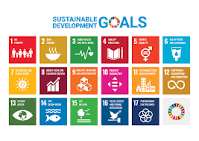HOW CULTURAL IDENTITY IS EXPRESSED IN DAILY ACTIVITIES
Cultural identity is often thought of as something grand—festivals,
traditional dress, or historic monuments. Yet, much of the essence of identity
is revealed in the quiet, everyday activities that fill our lives. It is in the
way we prepare food, greet one another, organize our homes, and even in the
seemingly small choices that we make from morning until night. In Nepal, a land
rich with diverse ethnicities, languages, and traditions, daily life itself
becomes a canvas where cultural identity is continuously painted and
reinterpreted.
Take, for instance, the ritual of preparing a meal. Beyond nutrition,
cooking is an act of cultural transmission. The spices chosen, the methods of
preparation, and the foods served carry stories of ancestry and geography.
Whether it is the fragrant gundruk simmering on a stove in a hillside
village or the meticulous layering of sel roti during a family breakfast
in the Kathmandu Valley, these culinary acts are more than habit—they are
declarations of belonging. They speak of a shared history and a collective
memory, communicated through flavor and technique.
Similarly, greetings and daily interactions are subtle yet powerful
expressions of identity. The traditional namaste—palms pressed together
with a slight bow—remains a common form of acknowledgment across Nepal, a gesture
laden with respect and humility. Yet, even within this, regional and ethnic
variations emerge. The way people greet elders, the titles they use, and the
degree of physical proximity reveal intricate layers of cultural norms that
define community and hierarchy.
Homes and living spaces, too, are curated to reflect identity. The
placement of religious icons, the use of particular colors, and the arrangement
of furniture follow customs passed down through generations. Even small
details—such as offering a seat to a guest or the order in which family members
eat—encode cultural values like hospitality, respect, and social roles. In many
Nepali households, these practices serve as living textbooks, teaching younger
members their place within a larger social fabric.
The way people dress daily is another visible marker of cultural identity,
though it is often influenced by modernity and convenience. Wearing a daura
suruwal or gunyo cholo might be reserved for special occasions in
cities, but in rural areas, traditional attire remains a daily norm. Even in
urban settings, elements like a dhaka topi or a patuka can be
quietly incorporated into everyday wear, signaling pride in heritage amidst a
globalized backdrop.
Work and leisure also offer arenas where identity is enacted. A farmer’s
knowledge of the land, seasonal rituals tied to agriculture, or the artisanal
skills passed from parent to child are deeply rooted in cultural context.
Likewise, community gatherings, storytelling, and games played by children all
carry the imprint of local traditions, ensuring that culture is lived as much
as remembered.
Importantly, these daily expressions of identity are not static. They
evolve with migration, education, and exposure to global influences, creating
dynamic blends that reflect both continuity and change. A young Nepali
professional may blend Western dress with traditional accessories, or a family
may prepare familiar dishes alongside new recipes learned from friends or
media. These adaptations highlight the fluidity of cultural identity—always
rooted but never rigid.
In a world that often pushes toward homogenization, recognizing the
cultural significance embedded in daily activities reminds us of the richness
in diversity. It teaches that identity is not just preserved in museums or on
stages but lived every day, in ways both visible and invisible. To observe how
people move through their routines is to glimpse the enduring stories they
carry—stories of place, history, and community that shape who they are.
Ultimately, cultural identity expressed through daily life is a quiet yet
profound testament to human connection. It invites respect for differences and
appreciation for the myriad ways people find meaning and belonging. In the
patterns of ordinary days, we find the extraordinary fabric of culture—woven
not only from tradition but also from innovation, resilience, and the simple
acts that make us who we are.

Comments
Post a Comment